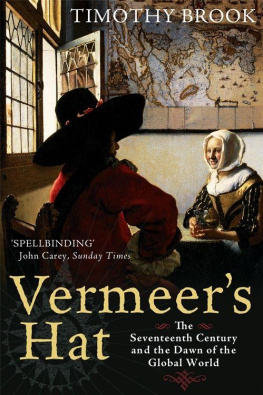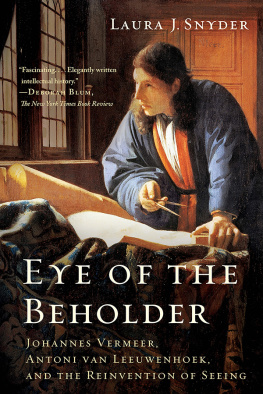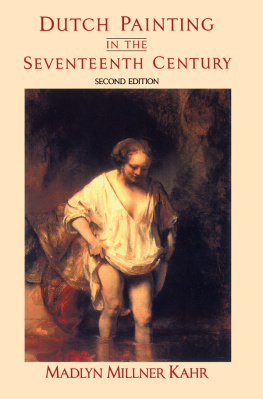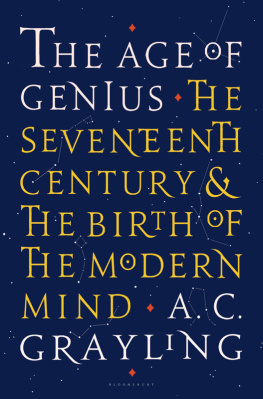Timothy Brook - Vermeer’s Hat: The Seventeenth Century and the Dawn of the Global World
Here you can read online Timothy Brook - Vermeer’s Hat: The Seventeenth Century and the Dawn of the Global World full text of the book (entire story) in english for free. Download pdf and epub, get meaning, cover and reviews about this ebook. City: London, year: 2008, publisher: Profile Books, genre: Detective and thriller. Description of the work, (preface) as well as reviews are available. Best literature library LitArk.com created for fans of good reading and offers a wide selection of genres:
Romance novel
Science fiction
Adventure
Detective
Science
History
Home and family
Prose
Art
Politics
Computer
Non-fiction
Religion
Business
Children
Humor
Choose a favorite category and find really read worthwhile books. Enjoy immersion in the world of imagination, feel the emotions of the characters or learn something new for yourself, make an fascinating discovery.
- Book:Vermeer’s Hat: The Seventeenth Century and the Dawn of the Global World
- Author:
- Publisher:Profile Books
- Genre:
- Year:2008
- City:London
- Rating:5 / 5
- Favourites:Add to favourites
- Your mark:
- 100
- 1
- 2
- 3
- 4
- 5
Vermeer’s Hat: The Seventeenth Century and the Dawn of the Global World: summary, description and annotation
We offer to read an annotation, description, summary or preface (depends on what the author of the book "Vermeer’s Hat: The Seventeenth Century and the Dawn of the Global World" wrote himself). If you haven't found the necessary information about the book — write in the comments, we will try to find it.
Vermeer’s Hat: The Seventeenth Century and the Dawn of the Global World — read online for free the complete book (whole text) full work
Below is the text of the book, divided by pages. System saving the place of the last page read, allows you to conveniently read the book "Vermeer’s Hat: The Seventeenth Century and the Dawn of the Global World" online for free, without having to search again every time where you left off. Put a bookmark, and you can go to the page where you finished reading at any time.
Font size:
Interval:
Bookmark:
VERMEERS HAT
This is a spellbinding book ... starting from details in five of Vermeers paintings, Brook takes readers on a series of brilliantly circuitous mystery tours that reveal the savagery on which western civilisation was built. John Carey, Sunday Times
Original and stimulating ... Vermeers Hat is a jewel of a study of two distinct yet intertwined worlds, feeling their way together towards modernity. London Review of Books
Brook takes his readers on a journey that encompasses Chinese porcelain and beaver pelts, global temperatures and firearms, shipwrecked sailors, silver mines and Manila galleons. A book full of surprising pleasures. Jonathan Spence, author of The Search for Modern China
In Brooks hands, Vermeers paintings really do become windows on the past, illuminating a fascinating period in which the world was being remade by global trade. Tom Standage, author of A History of the World in Six Glasses
Thanks to Brooks roving and insatiably curious gaze, Vermeers small scenes widen onto the broad panorama of world history ... a more entertaining guide to world history and to Vermeer is difficult to imagine. Ross King, author of The Judgment of Paris, Michelangelo and the Pope's Ceiling and Brunelleschis Dome
TIMOTHY BROOK is Principal of St Johns College at the University of British Columbia, and holds the Shaw Chair in Chinese Studies at Oxford University. He is the author of many books, including the award-winning Confusions of Pleasure.
BY THE SAME AUTHOR
Quelling the People: The Military Suppression of the Beijing Democracy Movement
Praying for Power: Buddhism and the Formation of Gentry Society in Late-Ming China
Culture and Economy: The Shaping of Capitalism in Eastern Asia (with Hy Van Luong)
Civil Society in China (with B. Michael Frolic)
The Confusions of Pleasure: Commerce and Culture in Ming China
Documents on the Rape of Nanking
China and Historical Capitalism (with Gregory Blue)
Nation Work: Asian Elites and National Identities (with Andre Schmid)
Opium Regimes: China, Britain, and Japan, 18391952 (with Bob Tadashi Wakabayashi)
The Chinese State in Ming Society
Collaboration: Japanese Agents and Chinese Elites in Wartime China
Death by a Thousand Cuts
(with Jrme Bourgon and Gregory Blue)
VERMEERS HAT
The Seventeenth Century and the Dawn
of the Global World
TIMOTHY BROOK

This paperback edition published in 2009
First published in Great Britain in 2008 by
PROFILE BOOKS LTD
3A Exmouth House
Pine Street
London EC1R 0JH
www.profilebooks.com
First published in the United States of America by
Bloomsbury Press, New York
Copyright Timothy Brook, 2008, 2009
1 3 5 7 9 10 8 6 4 2
Printed and bound in Great Britain by
Bookmarque Ltd, Croydon, Surrey
The moral right of the author has been asserted.
All rights reserved. Without limiting the rights under copyright reserved above, no part of this publication may be reproduced, stored or introduced into a retrieval system, or transmitted, in any form or by any means (electronic, mechanical, photocopying, recording or otherwise), without the prior written permission of both the copyright owner and the publisher of this book.
A CIP catalogue record for this book is available from the British Library.
eISBN: 978-1-84765-254-6

For Fay
Our arrivals at meaning and at value are momentary pauses in the ongoing dialogue with others from which meaning and value spring.
Gary Tomlinson, Music in Renaissance Magic
CONTENTS
MAPS

T HE SUMMER I was twenty, I bought a bicycle in Amsterdam and cycled southwest across the Low Countries on what would be the final leg of a journey that took me from Dubrovnik on the Adriatic to Ben Nevis in Scotland. I was on my second day out, pedaling across the Dutch countryside, when the light began to fade and the late-afternoon drizzle blowing in off the North Sea turned the road under my tires slick. A truck edged me too close to the verge, and my bicycle went over into the mud. I was not hurt, but I was soaked and filthy and had a bent fender to straighten. Without the shelter of a bridge, which was my usual hobos recourse in bad weather, I knocked at the door of the nearest house to ask for a few moments out of the rain. Mrs. Oudshoorn had watched my spill from her front window, which is where I guessed she spent many a long afternoon, so I was not altogether a surprise when she opened her door a crack and peered out at me. She hesitated for a brief moment, then put caution aside and opened the door wide so that this bedraggled young Canadian could come inside.
All I wanted was to stand for a few minutes out of the rain and pull myself together, but she wouldnt hear of it. She poured me a hot bath, cooked me dinner, gave me a bed to sleep in, and pressed on me several of her dead husbands things, including a waterproof coat. The next morning, as sunlight poured over her kitchen table, she fed me the best breakfast I ever had eaten and chuckled slyly about how angry her son would be if he ever found out shed taken in a complete stranger, and a man at that. After breakfast she gave me postcards of local sites to take as mementos and suggested I go see some of them before climbing back on my bicycle and getting back on the road. The sun was shining that Sunday morning, and there was nowhere I had to be, so out I went for a stroll and a look. Her town has stayed with me ever since. Mrs. Oudshoorn gave me more than the hospitality of her home. She gave me Delft.
A most sweet town, with bridges and a river in every street, is how the London diarist Samuel Pepys described Delft when he visited in May 1660. The description perfectly fit the town I saw, for Delft has remained largely as it looked in the seventeenth century. Its cobbled streets and narrow bridges were dappled that morning by galleon-shaped clouds scudding in from the North Sea a dozen kilometers to the northwest, and the sunlight reflecting off the canals lit up the brick faades of the houses. Unlike that far grander canal city, Venice, which Italians built up from the surface of the sea on wooden pilings driven into tidal sandbars, the Dutch built Delft below sea level. Dikes held back the North Sea, and water sluices were dug to drain the coastal fens. This history resides in its name, delven being the Dutch word for digging. The main canal running the length of the western part of the town is still called the Oude Delft, the Old Sluice.
Memories of the seventeenth century are peculiarly present in the two great churches of Delft. On the Great Market Square is Nieuwe Kerk, the New Church, so named because it was founded two centuries after the Oude Kerk, the Old Church on the Oude Delft canal. Both great buildings were built and decorated as Catholic churches, of course (the Old Church in the thirteenth century, the New Church in the fifteenth), though they did not remain so. The light coming through the clear glass in the windows and illuminating their interiors bleaches out that early history in favor of what came later: the purging of Catholic idolatry, including the removal of stained glass in the 1560s, which was part of the Dutch struggle for independence from Spanish rule, and the fashioning of Protestant gathering places of almost civil worship. The floors of both churches belong quite securely to the seventeenth century, for they are covered with inscriptions marking the graves of the wealthier citizens of seventeenth-century Delft. People in those days hoped to be buried as close as possible to a holy place, and better than being buried beside a church was to be interred underneath it. Many of the numerous paintings done of the interiors of these two churches show a lifted paving stone, occasionally even gravediggers at work, while other people (and dogs) go about their business. The churches kept registers of where each family had its grave, but most of the graves bear no written memorial. Only those who could afford the cost had the stones laid over them inscribed with their names and deeds.
Font size:
Interval:
Bookmark:
Similar books «Vermeer’s Hat: The Seventeenth Century and the Dawn of the Global World»
Look at similar books to Vermeer’s Hat: The Seventeenth Century and the Dawn of the Global World. We have selected literature similar in name and meaning in the hope of providing readers with more options to find new, interesting, not yet read works.
Discussion, reviews of the book Vermeer’s Hat: The Seventeenth Century and the Dawn of the Global World and just readers' own opinions. Leave your comments, write what you think about the work, its meaning or the main characters. Specify what exactly you liked and what you didn't like, and why you think so.










